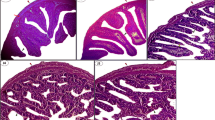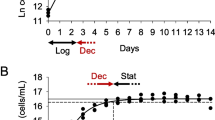Abstract
In order to efficiently deliver microencapsulated dietary protein to marine suspension-feeders under non-axenic conditions, it is necessary to ensure that capsules are not susceptible to rapid bacterial degradation. In this study, the preparation and use of protein-walled (P) capsules and glyceride-coated, nylon-protein-walled (GNP) capsules are compared for the delivery of dietary protein to oysters. P capsules incubated at 25 °C for 24 h in non-axenic seawater lost up to 38%14C-protein compared with losses of only 14%14C-protein from GNP capsules. Both P and GNP capsules were equally digestedin vitro by extracellular style enzymes ofCrassostrea gigas; however,in vivo feeding experiments withC. gigas indicated that14C-protein from P capsules was assimilated with an efficiency of 39%, while oysters assimilated14C from GNP capsules with a significantly lower efficiency of 29%. Selection of capsule type to maximize utilization of encapsulated protein by cultured marine suspension-feeders should depend on both the susceptibility of capsule type to bacterial degradation as well as the ability of the cultured suspension-feeder to digest and assimilate different capsule types.
Similar content being viewed by others
Literature cited
Chang, T. M. S., MacIntosh, F. C., Mason, S. G. (1966). Semipermeable aqueous microcapsules. I. Preparation and properties. Can. J. Physiol. Pharmac. 44: 115–128
Chu, F., Webb, K. L., Hepworth, D., Roberts, M. (1982). The acceptability and digestibility of microcapsules by larvae ofCrassostrea virginica. J. Shellfish Res. 2(1): 29–34
Epifanio, C. E. (1982). Phytoplankton and yeast as foods for juvenile bivalves: a review of research at the University of Delaware. In: Pruder, G. D., Langdon, C. J., Conklin, D. E. (eds.) Proceedings of the Second International Conference on Aquaculture Nutrition: biochemical and physiological approaches to shellfish nutrition. Louisiana State University, Louisiana, p. 292–304
Gabbott, P. A., Jones, D. A., Nicols, D. H. (1976). Studies on the design and acceptability of microencapsulated diets for marine particle feeders. II. Bivalve mollusks. Proc. 10th Eur. mar. Biol. Symp. 1: 127–141 [Persoone, G., Jaspers, E. (eds.) Universa Press, Wetteren]
Jones, D. A., Holland, D. L., Jabborie, S. (1984). Current status of microencapsulated diets for aquaculture. Appl. Biochem. Technol. 10: 275–288
Jones, D. A., Kurmaly, K., Arshard, A. (1987). Penaeid shrimp hatchery trials using microencapsulated diets. Aquaculture, Amsterdam 64: 133–146
Jones, D. A., Möller, T. H., Campbell, R. J., Munford, J. G., Gabbott, P. A. (1976). Studies on the design and acceptability of microencapsulated diets for marine particle feeders. I. Crustacea. Proc. 10th Eur. mar. Biol. Symp. 1: 229–235 [Persoone, G., Jaspers, E. (eds.) Universa Press, Wetteren]
Jones, D. A., Munford, J. G., Gabbott, P. A. (1974). Microcapsules as artificial food particles for aquatic filter feeders. Nature, Lond. 247: 233–235
Laing, I. (1987). The use of artificial diets in rearing bivalve spat. Aquaculture, Amsterdam 65: 243–249
Langdon, C. J. (1989). Preparation and evaluation of protein microcapsules for a marine suspension-feeder, the Pacific oysterCrassostrea gigas. Mar. Biol. 102: 217–224
Langdon, C. J., Levine, D. M., Jones, D. A. (1985). Microparticulate feeds for marine suspension-feeders. J. Microencapsulation 2: 1–11
Parsons, T. R., Takahashi, M., Hargrave, B. (1984). Biological oceanographic processes. Pergamon Press, New York
Peirson, W. M. (1983). Utilization of eight algal species by the bay scallop,Argopecten irradians concentricus (Say). J. exp. mar. Biol. Ecol. 68: 1–11
Roman, M. R. (1983). Nitrogenous nutrition of marine invertebrates. In: Carpenter, E. J., Capone, D. G. (eds.) Nitrogen in the marine environment. Academic Press, New York, p. 347–384
Romberger, H. P., Epifanio, C. E. (1981). Comparative effects of diets consisting of one or two algal species upon assimilation efficiencies and growth of juvenile oysters,Crassostrea virginica (Gmelin). Aquaculture, Amsterdam 25: 77–87
Sokal, R. R., Rohlf, F. J. (1981). Biometry. The principles and practice of statistics in biological research. 2nd ed. W. H. Freeman & Co., San Francisco
Thompson, R. J., Bayne, B. L. (1974). Some relationships between growth, metabolism, and food in the musselMytilus edulis. Mar. Biol. 27: 317–326
Urban, E. R., Langdon, C. J. (1984). Reduction in costs of diets for the American oyster,Crassostrea virginica (Gmelin), by the use of non-algal supplements. Aquaculture, Amsterdam 38: 277–291
Webb, K. L., Chu, F. E. (1982). Phytoplankton as a food source for bivalve larvae. In: Pruder, G. D., Langdon, C. J., Conklin, D. E. (eds.) Proceedings of the Second International Conference on Aquaculture Nutrition: biochemical and physiological approaches to shellfish nutrition. Louisiana State University, Louisiana, p. 272–291
Winter, J. (1970). Filter feeding and food utilization inArctica islandica L. andModiolus L. at different food concentrations. In: Steele, J. H. (ed.) Marine food chains. University of California Press, Berkeley, p. 196–206
Author information
Authors and Affiliations
Additional information
Communicated by M. G. Hadfield, Honolulu
Rights and permissions
About this article
Cite this article
Langdon, C.J., DeBevoise, A.E. Effect of microcapsule type on delivery of dietary protein to a marine suspension-feeder, the oysterCrassostrea gigas . Mar. Biol. 105, 437–443 (1990). https://doi.org/10.1007/BF01316315
Accepted:
Issue Date:
DOI: https://doi.org/10.1007/BF01316315




